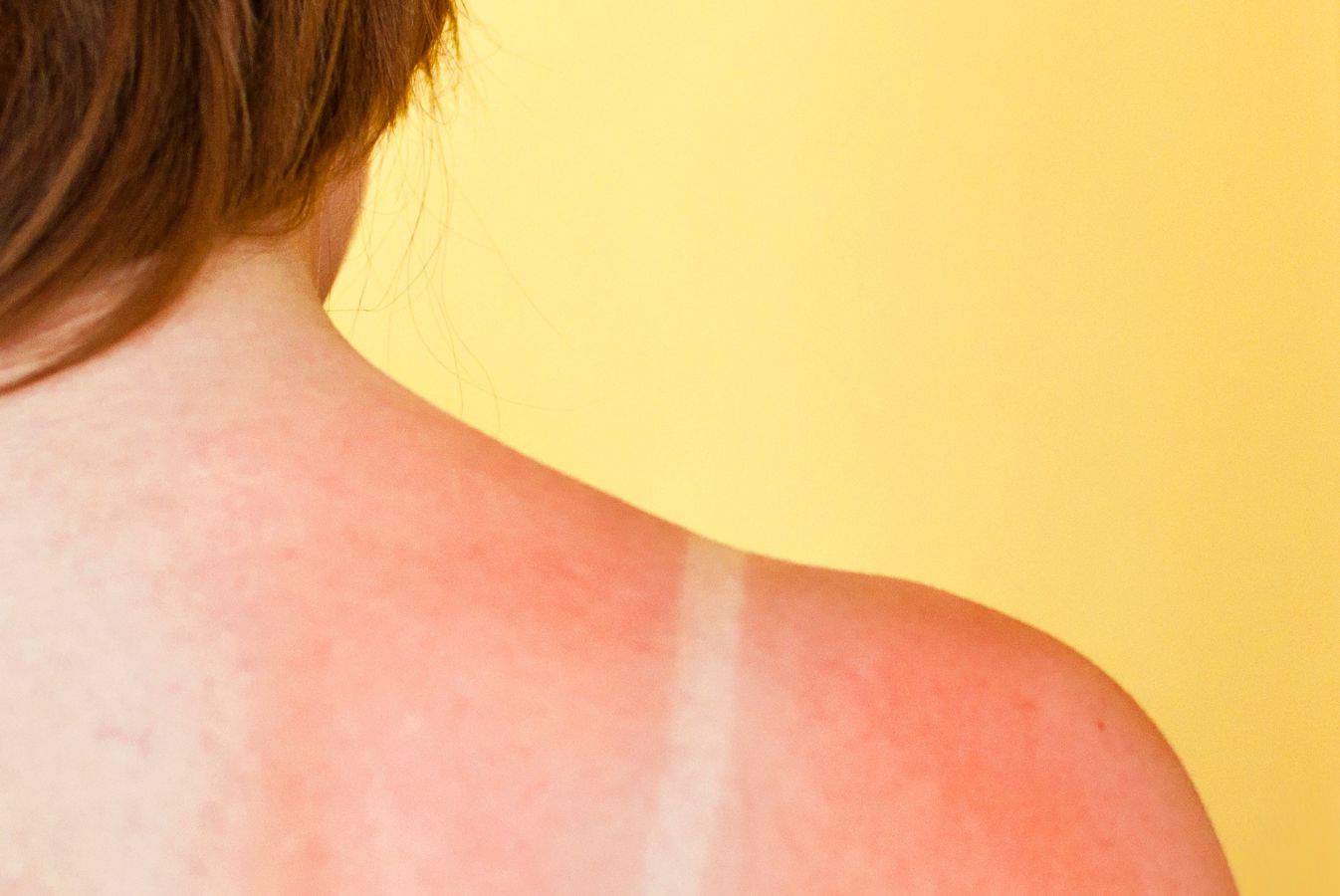When it comes to caring for your skin, using sunscreen is non-negotiable. Sun protection is not only crucial for preventing sunburn, but also for protecting against skin cancer and premature aging. However, choosing the right sunscreen can be an overwhelming task with so many options available. This guide will help you navigate the world of sunscreen and understand what SPF is recommended for optimal protection.
Table of Contents
How does sunscreen work?
What are the active ingredients in sunscreen?
Sunscreen works by absorbing or reflecting the sun’s harmful UV rays. The active ingredients in sunscreen vary depending on whether it is chemical or physical. Chemical sunscreens contain organic compounds such as oxybenzone, octinoxate, and avobenzone, which absorb UV rays. Physical sunscreens, on the other hand, contain mineral compounds such as titanium dioxide and zinc oxide, which reflect UV rays.
How do UVB rays affect the skin?
UVB rays are the primary cause of sunburn and play a key role in the development of skin cancer. These rays primarily affect the outer layer of the skin and are most intense between 10 am and 4 pm, during peak sunlight hours.
How does sunscreen protect the skin?
Sunscreen protects the skin by absorbing or reflecting the sun’s UV rays. When applied correctly, sunscreen can block up to 97% of UVB rays. It is important to note that no sunscreen can block 100% of UV rays, and it is essential to limit sun exposure and practice sun-safe behaviors in addition to using sunscreen.
What type of sunscreen should I choose?
What are the differences between chemical and physical sunscreen?
Chemical sunscreen is absorbed into the skin and absorbs UV rays, while physical sunscreen sits on top of the skin and reflects UV rays. Physical sunscreen may be more suitable for those with sensitive skin or those prone to acne, as it is less likely to clog pores. However, physical sunscreen can be thicker and may leave a white cast on the skin. Chemical sunscreens tend to be lighter and more easily absorbed, making them a better choice for everyday use.
What SPF should I look for?
The American Academy of Dermatology recommends using a broad-spectrum sunscreen with an SPF of at least 30. SPF, or sun protection factor, is a measure of how well a sunscreen protects against UVB rays. An SPF of 30 blocks about 97% of UVB rays, while an SPF of 50 blocks about 98%.
What type of sunscreen is best for acne-prone skin?
For those with acne-prone skin, it is best to choose a non-comedogenic sunscreen that will not clog pores. Look for oil-free or water-based formulas to avoid exacerbating breakouts.
How do I use sunscreen?
How much sunscreen should I use?
It is recommended to use at least one ounce of sunscreen (equivalent to a shot glass) to cover the entire body. For the face, a nickel-size amount is sufficient. Don’t forget to apply sunscreen to the ears, back of the neck, and any other exposed areas.
When should I apply sunscreen?
Sunscreen should be applied 15 minutes before sun exposure to allow time for it to absorb into the skin. It is essential to reapply sunscreen every two hours or immediately after swimming or sweating.
What should I know before buying sunscreen?
When buying sunscreen, look for a broad-spectrum sunscreen that will protect against both UVA and UVB rays. Water-resistant sunscreen is a must if you plan to be in the water or sweating. If you have sensitive skin, look for a sunscreen that is free of fragrances and preservatives. Also, consider your skin type when choosing a sunscreen formula. Those with dry skin may prefer a moisturizing formula, while those with oily skin may prefer a lightweight, mattifying formula.
What are the risks of not using sunscreen?
How does not wearing sunscreen increase the risk of skin cancer?
Not wearing sunscreen increases the risk of skin cancer, as UV rays from the sun damage skin cells and can lead to the development of cancerous cells. According to the Skin Cancer Foundation, one in five Americans will develop skin cancer in their lifetime.
Can not using sunscreen cause skin damage and aging?
Yes, not using sunscreen can cause skin damage and premature aging. UV rays can penetrate the skin and damage collagen and elastin fibers, leading to wrinkles, sagging skin, and age spots.
How can I protect my skin even on cloudy days?
UV rays can penetrate clouds, so it is essential to wear sunscreen even on cloudy days. Also, seek shade, wear protective clothing, and avoid being outside during peak sunlight hours.
Ultimately, choosing the best sunscreen is a personal choice. Consult with a dermatologist to determine the best sunscreen for your skin type and needs. Whether you choose a chemical or physical formula, an SPF of at least 30, and regular use are essential to protect your skin from the sun’s harmful rays.
Frequently asked questions
-
What SPF Should I Choose When Selecting Sunscreen?
Dermatologists recommend using an SPF of at least 30 to protect your skin from harmful UV rays. Choosing a higher SPF like 50 or above does offer more protection, but it doesn’t necessarily mean that the sunscreen is safer or better.
-
How Do I Choose the Right Sunscreen?
When selecting a sunscreen, choose one that protects against both UVA and UVB rays and is water-resistant. If you have sensitive or acne-prone skin, pick a mineral sunscreen over a chemical one, as they tend to be gentler on the skin. It’s important to look for sunscreens with at least SPF 30 and to apply an ounce of sunscreen to the entirety of exposed skin.
-
What Are the Best Sunscreen Ingredients?
Some of the best sunscreen ingredients include zinc oxide and titanium dioxide, which are found in mineral sunscreens. These ingredients provide broad-spectrum protection and are suitable for those with sensitive or acne-prone skin. Additionally, avobenzone and ecamsule are common ingredients found in chemical sunscreens.
-
Do I Need to Reapply Sunscreen Every Two Hours?
Yes, it’s recommended that you reapply sunscreen every two hours, or immediately after swimming or excessive sweating. Not doing so can leave your skin vulnerable to UV damage and skin aging.
-
Can I Pick Any SPF 15 Sunscreen or Should I Go for a Higher SPF?
SPF 15 is the bare minimum recommended for daily use, but it’s best to choose a sunscreen with at least SPF 30. This ensures that you’re getting ample protection.
-
What If I Have Darker Skin?
People with darker skin tones still need to protect themselves from UV rays. Look for sunscreens that contain at least SPF 30 and consider a mineral sunscreen to avoid the white cast that some chemical sunscreens can leave on darker skin.
-
Are Spray Sunscreens Safe to Use?
Spray sunscreens can be effective, but it’s important to apply them generously to avoid patchy coverage. Additionally, it’s recommended to avoid inhaling the sunscreen and spray in a well-ventilated area.
-
What Does “Choose a Sunscreen That is Right for You” Mean?
Choosing the right sunscreen means picking one that suits your skin type, lifestyle, and preferences. Consider whether you have sensitive or acne-prone skin, whether you prefer a mineral or chemical sunscreen, and whether you need to reapply frequently due to sports or other activities.
-
Can I Use Moisturizers with Sunscreen or Should I Use Dedicated Sunscreens?
Moisturizers with sunscreen are an option for daily use, but it’s still recommended to use a dedicated sunscreen for extended periods of sun exposure. Look for a moisturizer with at least SPF 30, or use a moisturizer and a separate sunscreen simultaneously.
-
What Sunscreen Formulations Are Available?
Sunscreens come in various formulations like lotions, sprays, sticks, and gels. Choose a formulation that you’re comfortable with and can apply generously.








